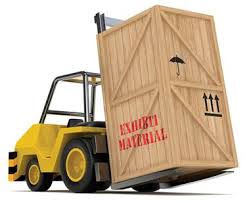written by Stacy Jones, Event Marketing Specialist
Although drayage may sound like a foreign word, it’s an English word that originated hundreds of years ago, derived from the word dray or draw to describe the action of horses pulling a cart or wagon. In today’s world, drayage is a term for material handling. On the trade show floor, general contractors or show decorators are required to move your crates, pallets or boxes from the truck these items were shipped in, to your booth space and back to at the end of the show. You are expected to pay for this service, in fact if you are not careful your drayage fees could end up costing more than shipping costs. Drayage prices include labor, forklifts and the maintenance of equipment. This service is often the largest source of revenue for show decorators and general contractors. Unfortunately, they are very aware that many exhibitors don’t know what drayage fees are or are likely to forget. So don’t let yourself be caught off guard when it comes to drayage pricing.

Here are some tips and tricks to keep the cost of drayage lower.
- Consider advanced warehouse storage, this can be a cheaper than shipping directly to the show. Check your exhibitor kit to find out pricing for each option or ask your project manager.
- Keep normal working hours in mind. You will pay a surcharge for weekend and after hours work.
- There is usually a minimum weight of 200 pounds. If you ship a 20 pound box by itself, you will still pay for 200 pounds, so consolidate all loose items onto one pallet to avoid extra charges.
- Submit your material handling forms before the deadline and then clearly communicate expectations with your staff.
- Ask your display house to help you reduce the weight or for ideas on how to cut down drayage fees.





